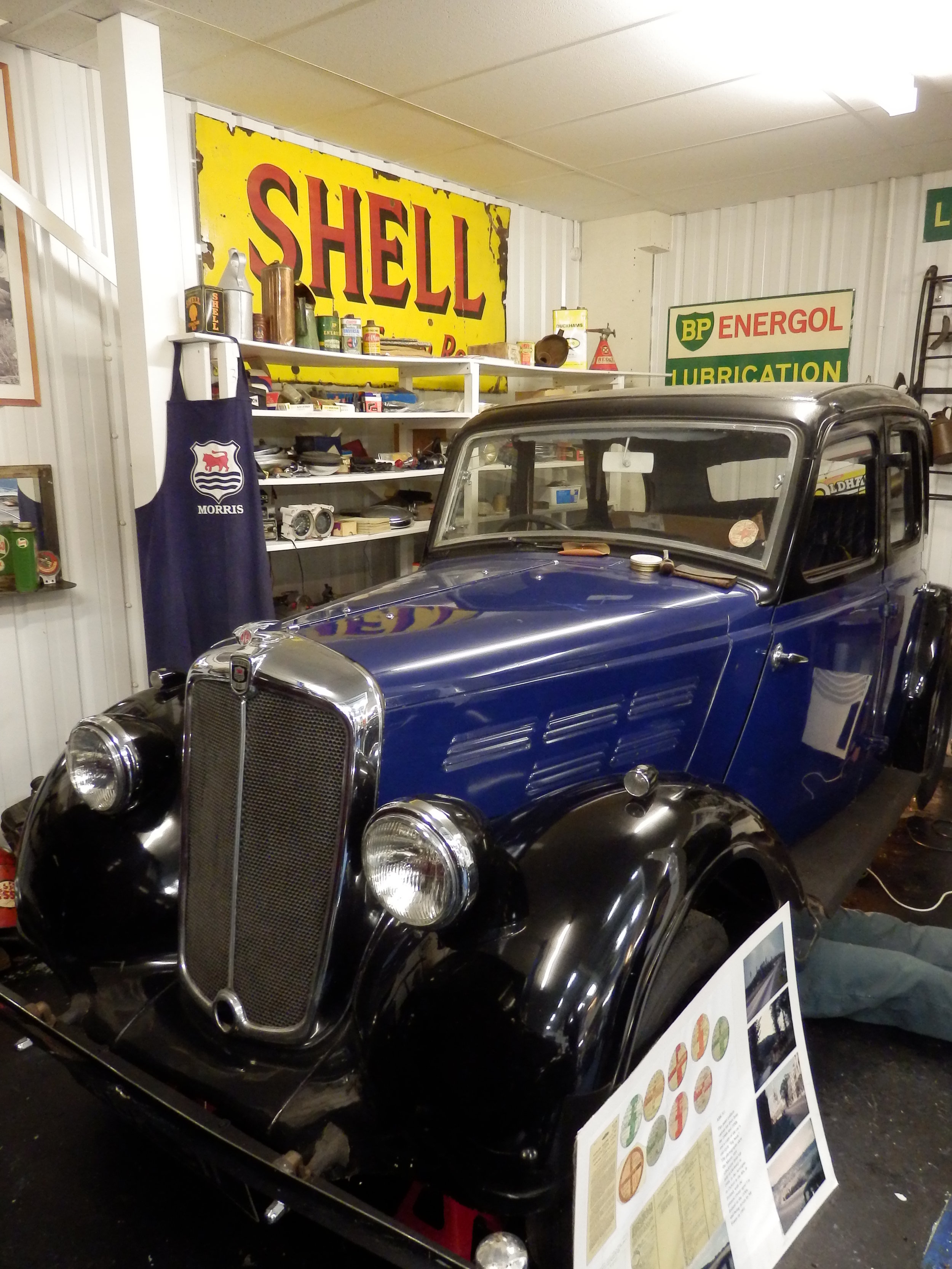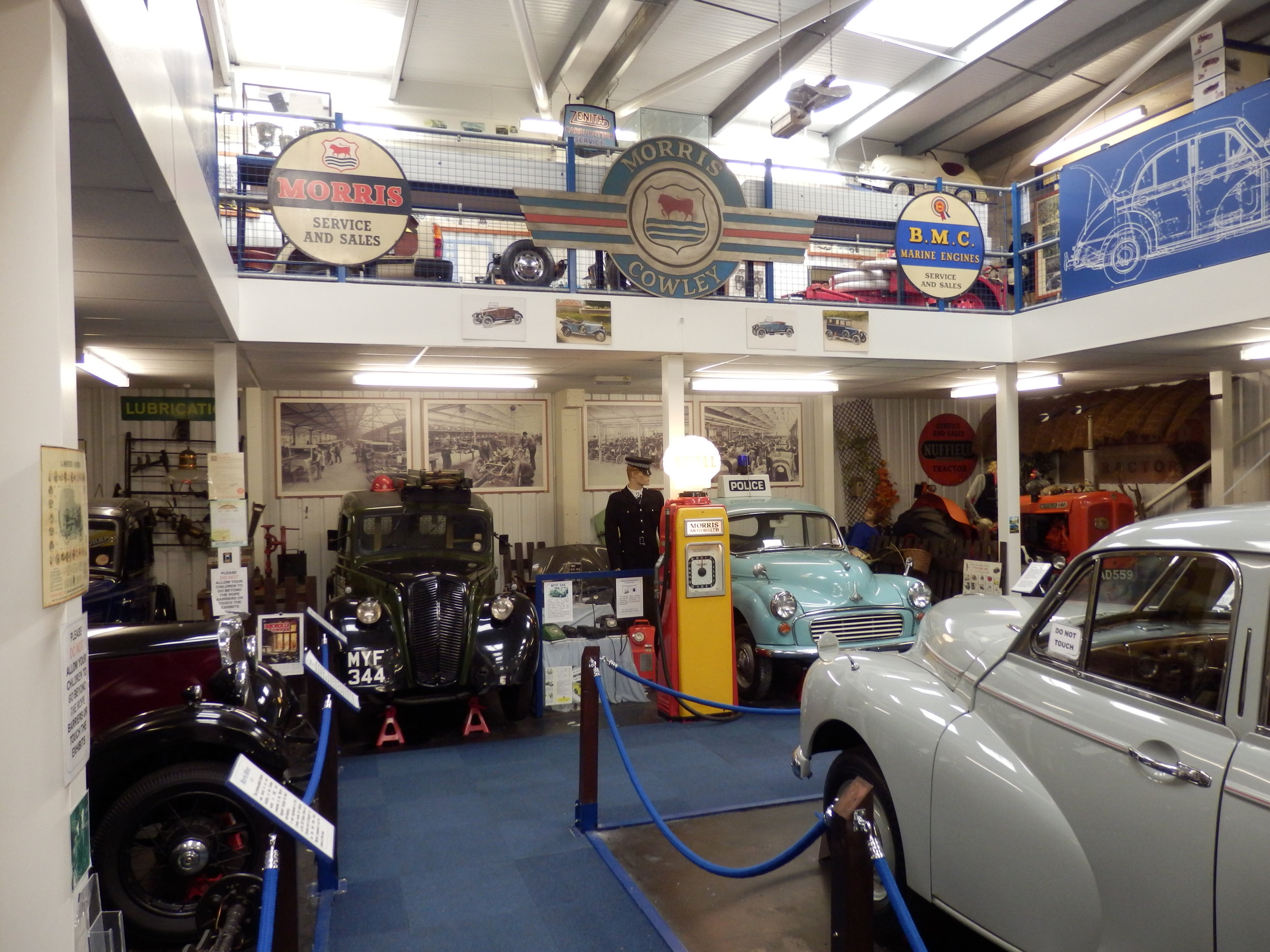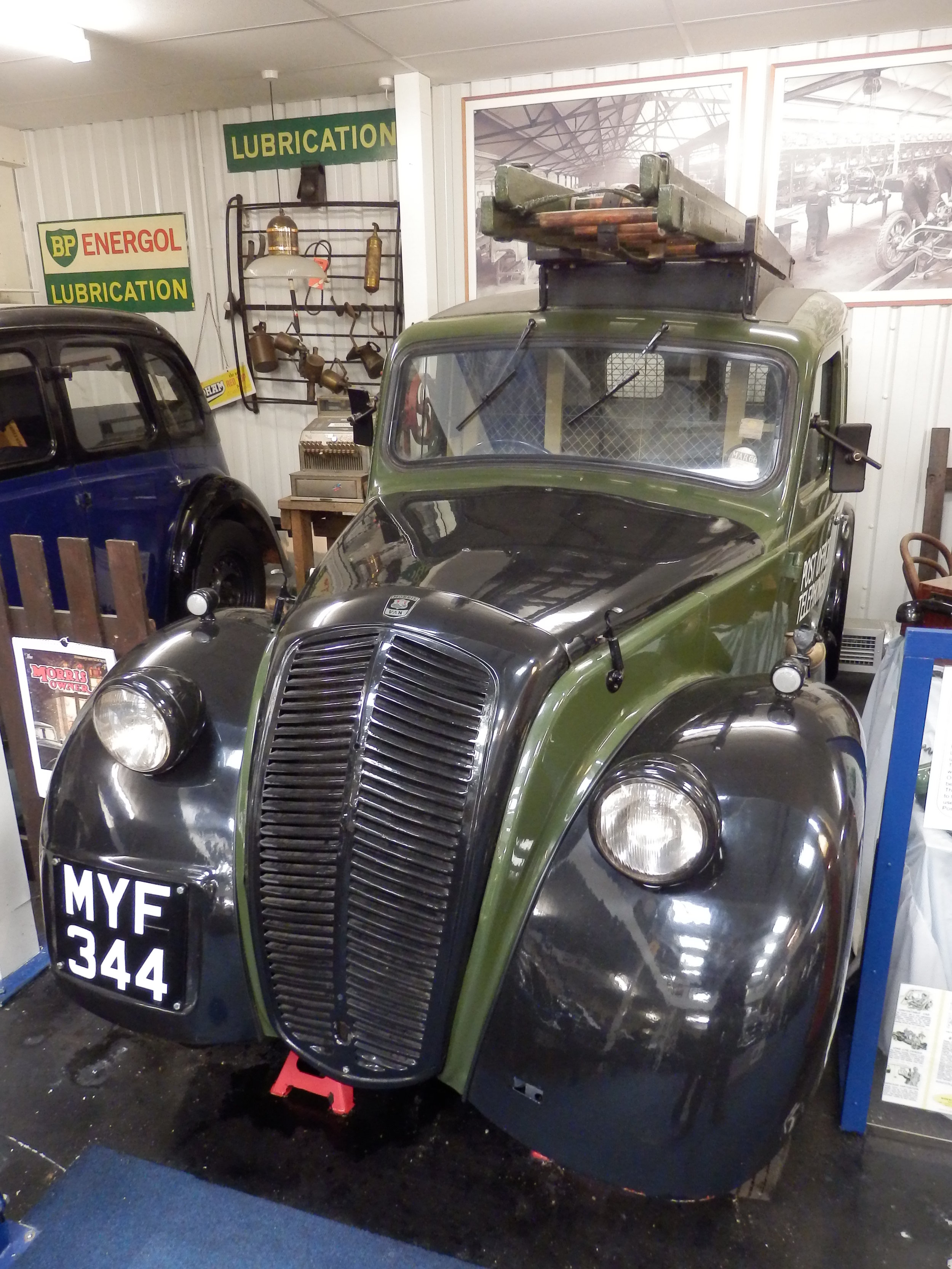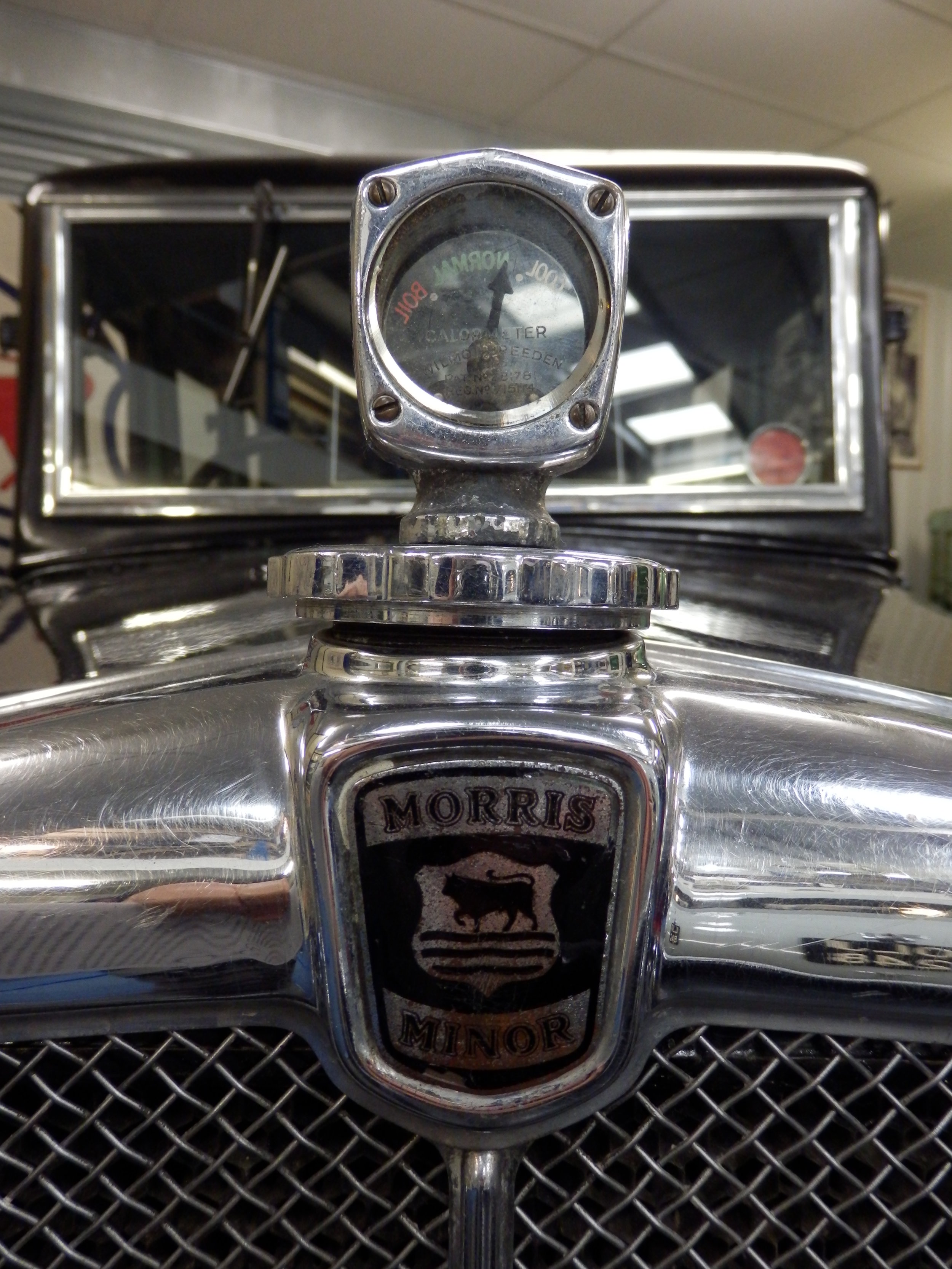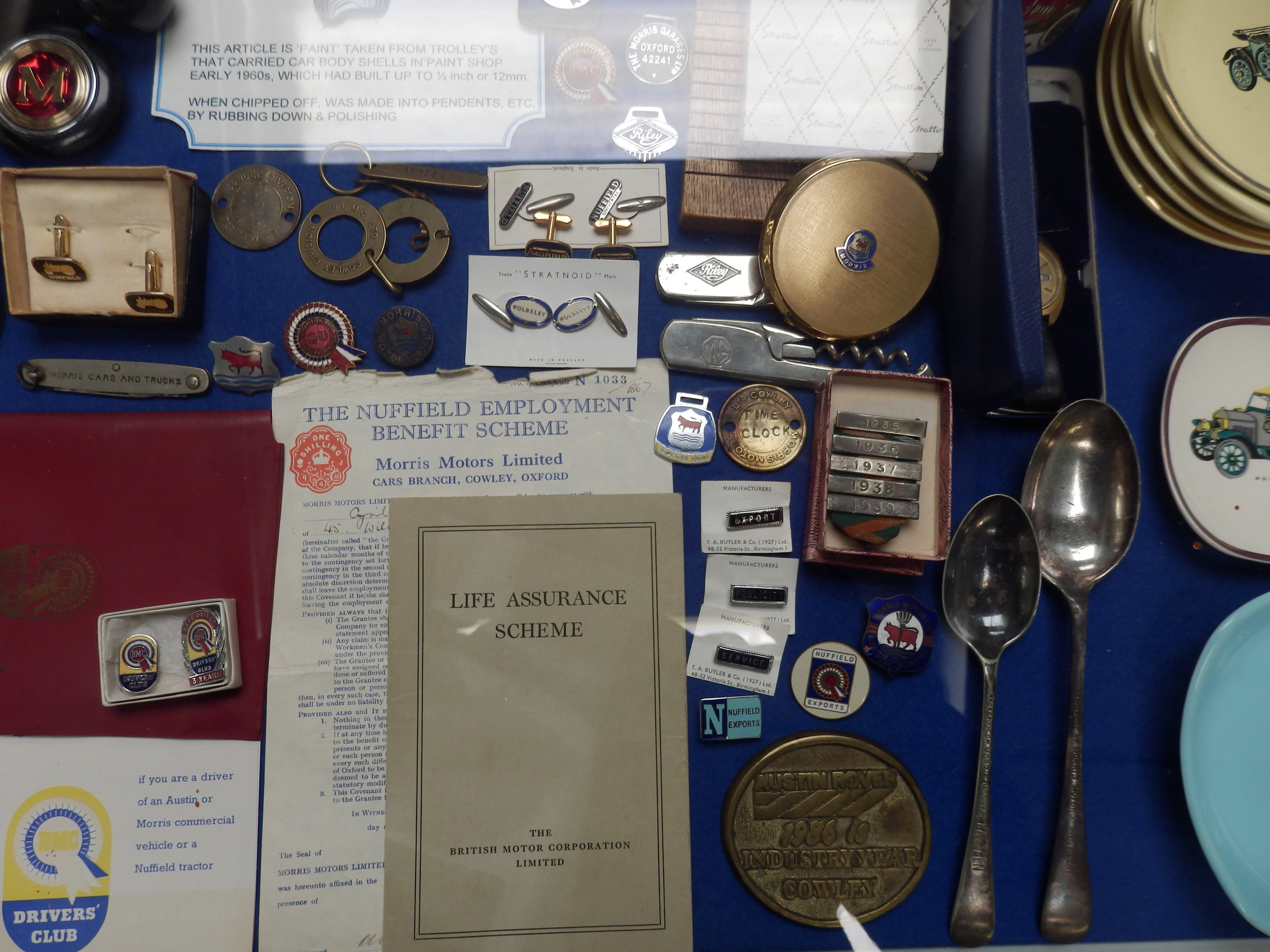
Welcome to the Morris Motors Museum
❂
Welcome to the Morris Motors Museum ❂
Our new exhibit - A 1971 Morris Mini 1000 saloon in the colour called ‘Blaze’.
The Morris Motors Museum traces the development of the Nuffield empire, founded by William Morris (who became Lord Nuffield) which grew from humble beginnings in a bicycle workshop to become one of the world’s major vehicle manufacturers.
The Morris Motors Museum has a collection of eleven cars and one van built by Morris Motors and other Nuffield Organization companies and their successors. They range in age from a 1928 Morris Oxford bullnose to a 1977 BMC Mini. The collection includes also a Z type van and a Nuffield tractor. The collection is displayed in a reconstruction of part of the former factory from Cowley, Oxford.
The link between William Morris founder of Morris Motors and buses in Oxford, can be traced to 1913 when he and a partner started the first motorbus service in the city.
William Morris
William Morris was born on 10th October 1877 in Worcester (however surprisingly of Oxfordshire parents) but moved to Oxford in 1880 when he was only three. He went to school in Cowley and Headington but by the age of fifteen (living in the family home at 16 James Street, Cowley - which now has a blue plaque celebrating the home of William Morris) he had started a bicycle repair business in a brick built building at the bottom of the garden, after learning the trade from being employed (for only a few months) by a local cycle firm. his working capital was just £4 in 1893.
Cycling was his passion-he had ridden a penny farthing when he was 14 - and he became a champion racer, securing seven medals for his efforts. It was through cycling that he met his wife Elizabeth Anstey - always known as Lilian - whom he married in 1904.
The business expanded into motorcycles in 1901 and came to be advertised as ‘W.R. Morris, Practical Cycle Maker and Repairer, 48 High Street and James Street, sole make of the celebrated Morris Cycles and Morris Motorbikes’. At first his showroom was the right hand side of his parents’ house in James Street, then he had a showroom at 48 High Street and then in 1901 a workshop and storage space at 1 Queen’s Lane. He then moved to 100a Holywell Street (now 21 Longwall Street), taking on a partner Joseph Cooper, but this did not work out, so he dissolved the partnership. About two years later he formed the Oxford Automobile and Cycle Agency with undergraduate Launcelot Creke and a local businessman F.G.Barton, which was based at 16 George Street. But again this partnership collapsed within a year, which prompted Morris to vow that he would never ‘partner’ anyone else and in future retain sole ownership of his business; this he achieved thoughout his life.
In 1904 Morris had resumed business trading under his sole name. In 1905 he also started a hire company and a taxi cab firm, and by 1910 Morris was trading as a motor car hire and repair company. In 1912 he formed WRM Motors Ltd, and would soon to be selling new cars as well.
Between 1910 and 1911, Merton College (his landlords) built a new building along Longwall Street known as Morris Garages, and it was here in 1912 that he designed and built his first car, the prototype Bullnose Morris. He bought new showrooms at 36 and 37 Queen Street in 1913, and in 1914 a further large garage in the hotel yard of the Clarendon Hotel in Cornmarket. During all this time, from the age of fifteen, he had worked at the bench, hands on, but this was soon to be replaced by desk work. Known affectionately as ‘the governor’ and ‘uncle’, he could nevertheless fly off the handle if things went wrong. The first production Morris Oxford (the ‘official’ name of the Bullnose) was priced at £165.
Not having enough room to expand, Morris in early 1913 first rented and then purchased the old derelict Military Training College in Holloway, Cowley. It had been Hurst’s Grammar School where his father was educated. He used the old three storey building, which had been empty for 21 years,to assemble the Bullnose Morris cars. He also lived in the Manor House within the college grounds. During late 1913 the old parade ground was covered with a 100,000 sq ft building and formed the expansion area Morris needed. There was no further expansion until 1919.
It must be noted that in 1913 Morris operated the first motor buses in Oxford. The buses could, unlike the horse trams, get up the hill to Temple Cowley, enabling his employees to ride to work. Later Morris sold his bus operation to the Tramway Company, which in 1921 was re-named City of Oxford Motor Services Ltd.
The First World War produced a slump in demand for new cars. However, Morris obtained some very lucrative war contracts. First the factory made hand grenades, then bomb cases for the Stokes trench howitzers and finally naval mine sinkers at the rate of 2000 a week, thanks to the assembly line production methods. This output required the Great Western Railway to increase its siding capacity. This war effort secured an OBE for Morris. And during the wartime period the Cowley plant still produced 1344 cars.
In 1919 WRM Motors Ltd was put into voluntary liquidation to make way for the new company of Morris Motors Ltd. This flourished throughout the 1920’s with the popular Morris Cowley and Oxford models, and by 1925 the factory was producing over 1000 cars a week, developing into one of the world’s leading car manufacturers. During this time Morris pioneered the all-steel motor vehicle and in 1927 helped to establish the other famous Cowley company, the Pressed Steel Company.
The Museum’s Morris Oxford.
The Wall Street Crash of 1929 saw demand slump. Morris’ solution was to produce his £100 car- a small, affordable 8hp Morris Minor. He was joined by engineer Leonard Lord, whose modernisation programme saved the company.
By 1937 this was the largest car manufacturer in Europe, and the next year reached the milestone of its millionth vehicle. Probably the biggest triumph came in September 1948 with the introduction of another Morris Minor, the well-known model represented in this museum.
By this time William Morris had become Lord Nuffield and amassed a huge personal fortune. Most of this was given away, earning him a place in the Guinness Book of Records as one of Britain’s greatest philanthropists. Many donations were to hospitals and medical causes; he had always wanted to be a doctor. He created the Nuffield Foundation to support medical and scientific research. In 1948 he was made a Fellow of the Royal College of Surgeons.
However, he did enjoy some of his wealth. He bought Huntercombe Golf Course in 1926, when the male-dominated club would not allow his wife to play. And he bought the nearby Nuffield Place as his home in 1933. And in 1948 he founded Nuffield College in the University of Oxford with an endowment of a million pounds.
Lord Nuffield died on 22nd August 1963 and was buried at the local church in Nuffield. His wife had predeceased him by four years. They had no children, and his remaining estate passed to Nuffield college. The family home at Nuffield Place came into the ownership of the National Trust in 2011.
Click on the link below for the Morris Motors Museum Fleet List
2013 - A double centenary celebration
2013 was a significant year for us. A double centenary celebration - 100 years of motorbuses in the city of Oxford and 100 years of car manufacture in Cowley.
Displays at the museum illustrate the part played by the Cowley plant in the development of Oxford between the two world wars and its part in the daily lives of its citizens, in particular the Morris workforce.
The Morris Motors Museum was made possible with help from :


